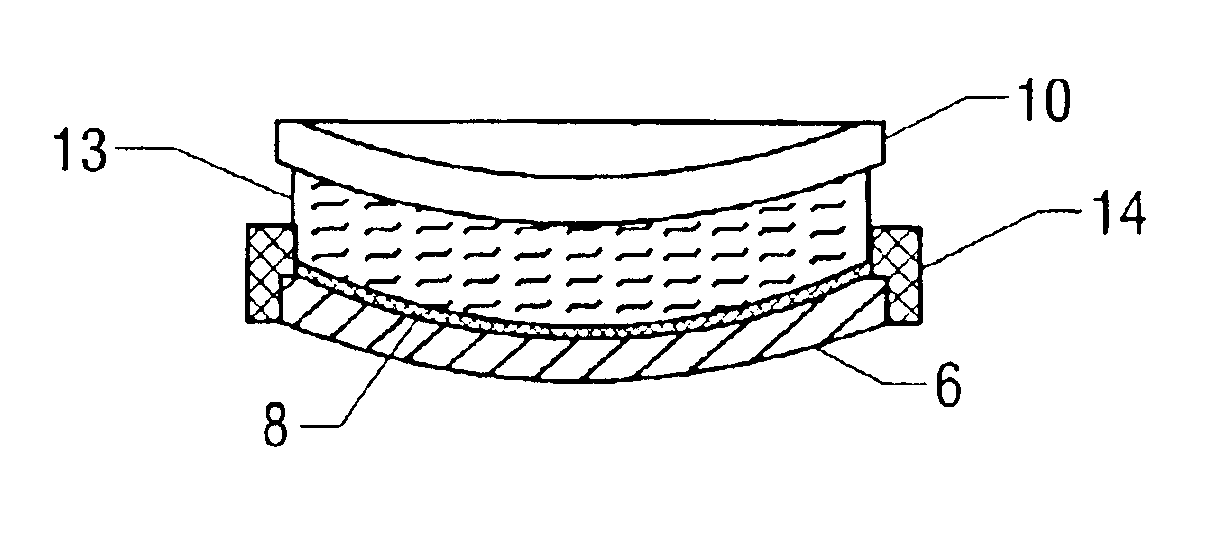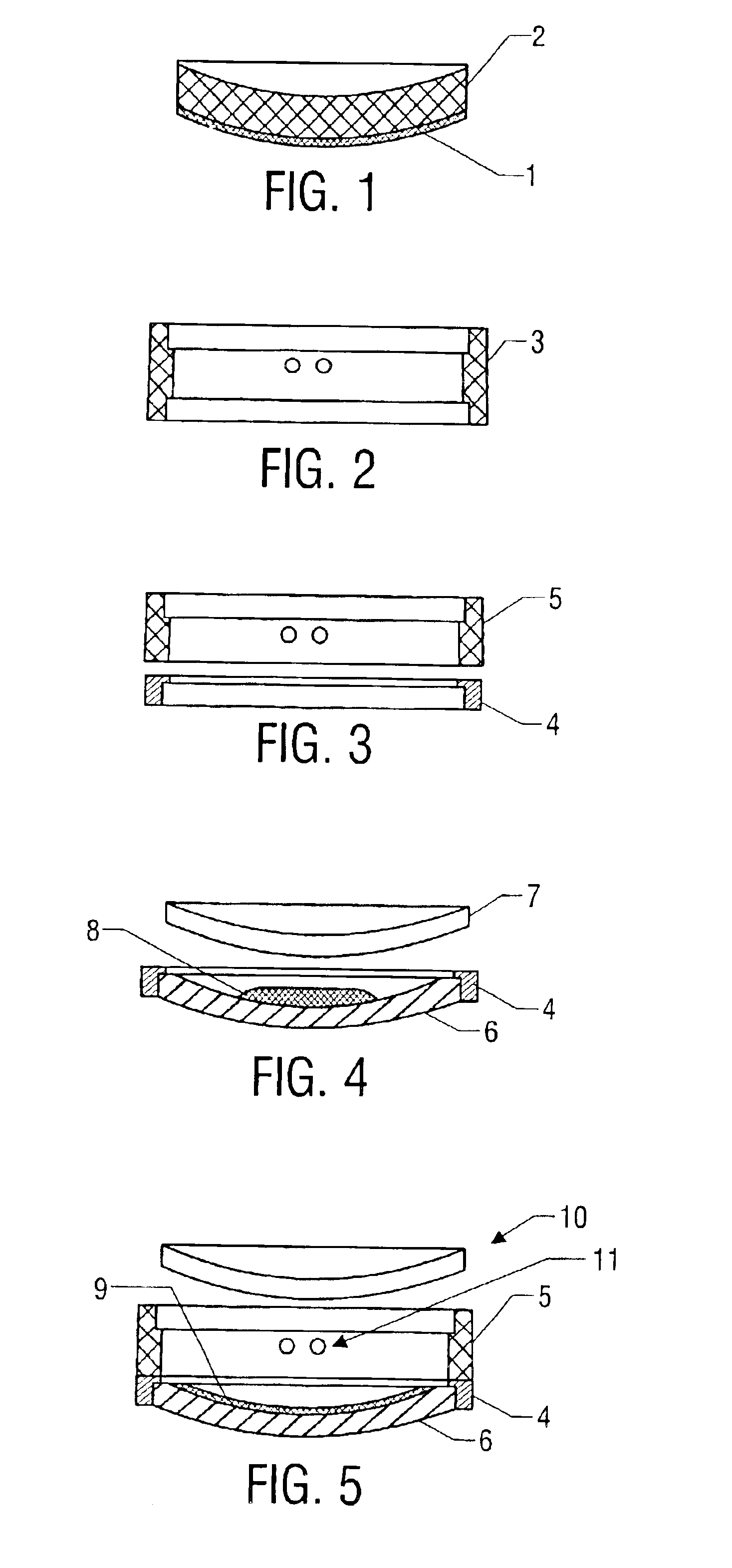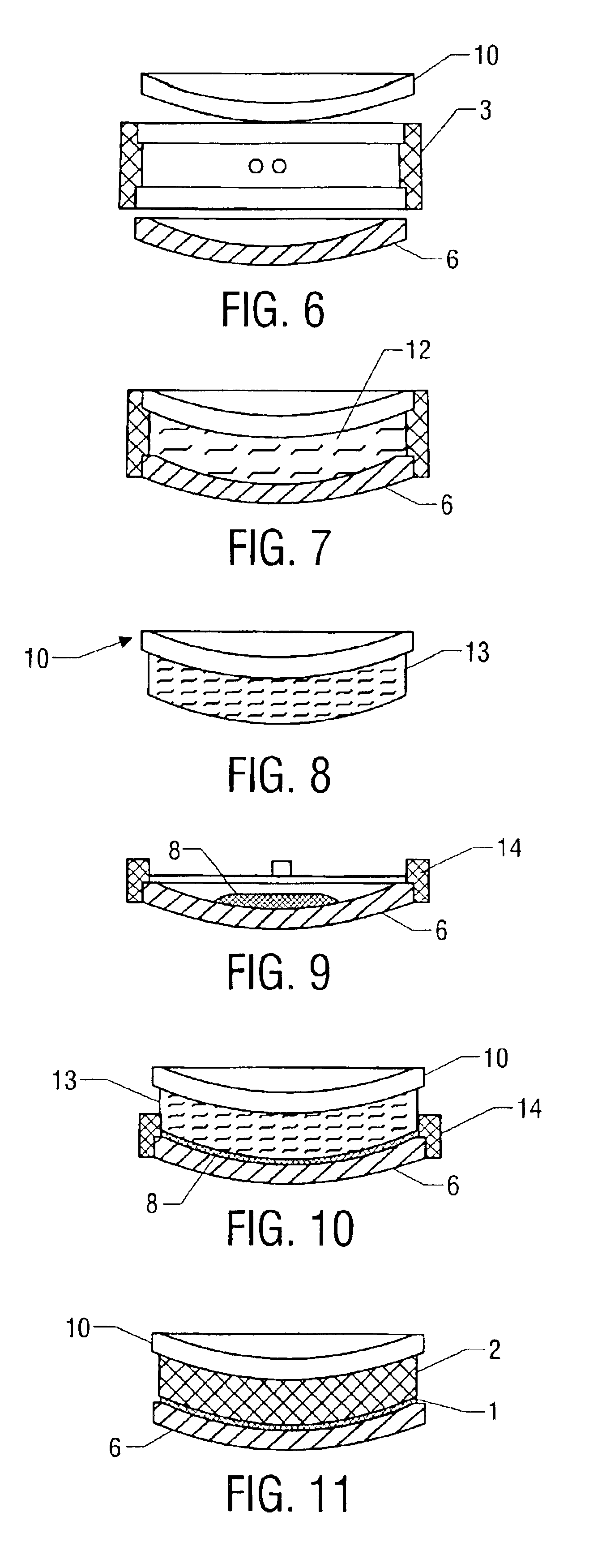Methods for preparing composite photochromic ophthalmic lenses
a technology of ophthalmic lenses and composites, applied in the field of composite photochromic ophthalmic lenses, can solve the problems of not being optimal for other desired lens properties such as grinding and polishing
- Summary
- Abstract
- Description
- Claims
- Application Information
AI Technical Summary
Benefits of technology
Problems solved by technology
Method used
Image
Examples
first embodiment
ng Composition Gelled
To produce the composite photochromic semifinished lenses of one aspect of the present invention, a two-part gasket is used. A gasket used to normally produce a 75 mm diameter semifinished lens, as shown in FIG. 2 with an edge thickness of 10 mm was circumferentially cut as shown in FIG. 3 using a lathe in such a way as to produce a “front half-gasket”4 consisting of a front mold sealing surface and a gasket wall approximately 1.7 mm in height. The gasket piece remaining after cutting forms the “rear half-gasket”5 which consists of a rear mold sealing surface and a gasket wall approximately 8.3 mm in height.
A front glass single vision mold with a 6 diopter concave surface radius of curvature was seated into the sealing area of the “front half-gasket. Approximately 10 grams of a photochromic dye-containing composition (see Table 1) was poured onto the mold. A second glass mold with a 6 diopter convex surface curvature was then placed on the 1.7 mm high wall. The ...
example 1
Methacrylate-Based Photochromic Layer
ComponentPercentagetridecyl methacrylate 24%1,12-dodecanediol dimethacrylate 24%trimethylolpropane trimethacrylate 12%polyethyleneglycol dimethacrylate 30%tetraethyleneglycol dimethacrylate 10%=100%photoinitiator0.06%*photochromic dye, e.g., naphthopyrans, naphthoxazines0.01-0.2% *can be 0.005-0.08% photoinitiator and / or 0.1-1.0% thermal initiator
example 2
Urethane Dimethacrylate-Based Photochromic Layer
ComponentPercentagealiphatic diurethane dimethacrylate79.5%tridecyl methacrylate 8%1,12-dodecanediol dimethacrylate 8%trimethylolpropane trimethacrylate 4%2,2-diallylbisphenol-A0.5%=100%photoinitiator0.06%*photochromic dye, e.g., naphthopyrans, naphthoxazines0.01-0.2% *can be 0.005-0.08% photoinitiator and / or 0.1-1.0% thermal initiator
PUM
| Property | Measurement | Unit |
|---|---|---|
| thickness | aaaaa | aaaaa |
| thickness | aaaaa | aaaaa |
| thickness | aaaaa | aaaaa |
Abstract
Description
Claims
Application Information
 Login to View More
Login to View More - R&D
- Intellectual Property
- Life Sciences
- Materials
- Tech Scout
- Unparalleled Data Quality
- Higher Quality Content
- 60% Fewer Hallucinations
Browse by: Latest US Patents, China's latest patents, Technical Efficacy Thesaurus, Application Domain, Technology Topic, Popular Technical Reports.
© 2025 PatSnap. All rights reserved.Legal|Privacy policy|Modern Slavery Act Transparency Statement|Sitemap|About US| Contact US: help@patsnap.com



